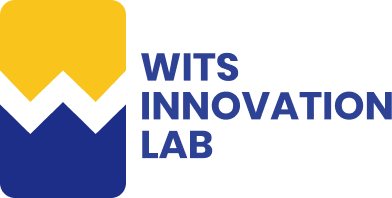Namma Yatri stands as a competing player in the continuously evolving urban transport industry, especially in the case of auto Rickshaws. This blog focuses on Namma Yatri: mapping its idea, where it comes from, where it is going, and where it fits in the ONDC.
The Genesis of Namma Yatri
Namma Yatri was flagged off in Bengaluru in November 2022. The app was to be a direct driver-to-consumer platform, thereby avoiding using brokers, which would, in effect, create additional overhead costs for both the driver and the customer. This went a long way in allowing self-employment opportunities for auto-rickshaw drivers while at the same time providing a cheaper and more reliable means of transport for the public.
The application was designed with the Beckn protocol, an open-source network standard, to facilitate connecting different mobility services. The main objective was to build an MMSC that would link various transport systems, enabling people in urban centers to access integrated transport solutions.
The application was designed with the Beckn protocol, an open-source network standard, to facilitate connecting different mobility services. The main objective was to build an MMSC that would link various transport systems, enabling people in urban centers to access integrated transport solutions.
Expansion and Growth
The service's initial success in Bengaluru prompted it to be extended to other cities in Karnataka, such as Mysuru and Tumakuru. The app's success in these areas paved the way for the company's expansion into other large cities within the country. By early 2023, Namma Yatri had begun operations in two other large cities, Hyderabad and Kolkata.
The first route for Namma Yatri was flagged off in Delhi in January 2024 by Delhi Transport Minister Mr. Kailash Gahlot. This was important because it launched a new competitor in the city's autorickshaw market, which had previously been occupied by the likes of Ola and Uber. This was followed by a rapid onboarding of 10,000 auto-rickshaw drivers in Delhi, which strengthened Namma Yatri's position in the market.
The expansion continued. In Chennai, too, Namma Yatri started its services by the end of January 2024. This app was launched by Transport and Road Safety Commissioner Mr. A Shanmuga Sundaram, IAS. This particular launch expanded Namma Yatri's geographical coverage and proved the firm's capacity to expand and succeed in various urban contexts. The Chennai launch also recruited many drivers and focused on significant places such as Valluvar Kottam, Arignar Anna Zoological Park, and the Rajiv Gandhi Government Hospital.
The first route for Namma Yatri was flagged off in Delhi in January 2024 by Delhi Transport Minister Mr. Kailash Gahlot. This was important because it launched a new competitor in the city's autorickshaw market, which had previously been occupied by the likes of Ola and Uber. This was followed by a rapid onboarding of 10,000 auto-rickshaw drivers in Delhi, which strengthened Namma Yatri's position in the market.
The expansion continued. In Chennai, too, Namma Yatri started its services by the end of January 2024. This app was launched by Transport and Road Safety Commissioner Mr. A Shanmuga Sundaram, IAS. This particular launch expanded Namma Yatri's geographical coverage and proved the firm's capacity to expand and succeed in various urban contexts. The Chennai launch also recruited many drivers and focused on significant places such as Valluvar Kottam, Arignar Anna Zoological Park, and the Rajiv Gandhi Government Hospital.
Namma Yatri and ONDC: A Synergistic Partnership

In particular, the tie-up with ONDC has enhanced Namma Yatri's capabilities. ONDC is a government initiative to liberalize digital commerce and prevent large corporations from dominating the various segments of the country's economy. It is a project of the Department for Promotion of Industry and Internal Trade (DPIIT) under the leadership of the Ministry of Commerce and Industry.
Namma Yatri has successfully integrated the ONDC network, exemplifying the transformative power of open networks in urban mobility. This way, Namma Yatri aligns with ONDC's open network standards of enabling convenience, openness, fairness, and service efficiency. No fees are charged to the drivers, which has been specifically advantageous to them because they get to make more profits, therefore giving them the incentive to perform well on the platform.
As discussed above, ONDC's support has established technological infrastructure and offered Namma Yatri a competitive edge. The app's development was enhanced with the backing of Juspay, a company focused on payments.
Namma Yatri has successfully integrated the ONDC network, exemplifying the transformative power of open networks in urban mobility. This way, Namma Yatri aligns with ONDC's open network standards of enabling convenience, openness, fairness, and service efficiency. No fees are charged to the drivers, which has been specifically advantageous to them because they get to make more profits, therefore giving them the incentive to perform well on the platform.
As discussed above, ONDC's support has established technological infrastructure and offered Namma Yatri a competitive edge. The app's development was enhanced with the backing of Juspay, a company focused on payments.
Differentiating Factors
Some of the key distinguishing features of Namma Yatri that set them apart from other ride-hailing apps are as follows:
1. Direct-to-Driver Platform
Unlike popular ride-hailing apps, which work on a commission basis, where they deduct a percentage from the fare before paying the driver, the Namma Yatri app allows passengers to pay the driver in full without any deductions. This model also enhances fair prices for consumers or customers and boosts driver income or revenues.
2. Open Source Technology
Developed on top of the Beckn protocol, Namma Yatri incorporates open-source solutions that aim to democratize technological advancements. This approach also enables incremental improvements and is incorporated into other mobility services.
3. Driver Empowerment
In addition, Namma Yatri's business model is centered on enhancing the drivers' control over their income since the firm minimizes its operations costs. The pay-as-you-go model, which requires a minimal charge per subscription for a fixed number of rides, has also received much support.
4. Customer-Centric Features
Customers can compare the cost, choose drivers, and track their location in real-time, making the entire process enjoyable. Moreover, the Namma Yatri service plans to start integrated bus ticket booking and other public transport services.
This subscription model adopted by Namma Yatri is interesting to discuss in detail. The two options of payment are the daily subscription fee of Rs. 25 for all the rides within the day or the ride fee of Rs. 50 per ride. It has allowed it to appeal to a wider pool of drivers and attract more of them, not to mention improve the availability of services for customers.
This subscription model adopted by Namma Yatri is interesting to discuss in detail. The two options of payment are the daily subscription fee of Rs. 25 for all the rides within the day or the ride fee of Rs. 50 per ride. It has allowed it to appeal to a wider pool of drivers and attract more of them, not to mention improve the availability of services for customers.
Impact and Achievements
Looking at the current scenario, Namma Yatri has become a major player in the mobility markets since its inception. The app has crossed 50 lakh downloads and has an active presence in several cities. It has been reported that in Bengaluru alone, it has signed more than 1 lakh merchants. 09 lakh drivers reach more than 5000 people per day.
When launched in Chennai, it received a good response, and within a short duration, Namma Yatri attracted 10,000 drivers. The app aims to enroll one lakh more drivers within the next six months, which shows the tremendous expansion and success of the project among the drivers.
Currently, Namma Yatri's cost strategy has proven to have zero commission for its drivers, which means they have earned more than Rs 360 crore without any intermediary charges. This has led to a significant increase in drivers' earnings, which has benefited their lives and made them more customer-oriented.
High growth rates show that the company has a strong operational and responsive business model to ensure that cities are accessed effectively. The integration of public transportation services and the emphasis on first—and last-mile solutions have also added increased value.
When launched in Chennai, it received a good response, and within a short duration, Namma Yatri attracted 10,000 drivers. The app aims to enroll one lakh more drivers within the next six months, which shows the tremendous expansion and success of the project among the drivers.
Currently, Namma Yatri's cost strategy has proven to have zero commission for its drivers, which means they have earned more than Rs 360 crore without any intermediary charges. This has led to a significant increase in drivers' earnings, which has benefited their lives and made them more customer-oriented.
High growth rates show that the company has a strong operational and responsive business model to ensure that cities are accessed effectively. The integration of public transportation services and the emphasis on first—and last-mile solutions have also added increased value.
Future Prospects
The future prospects of Namma Yatri seem unbounded and bright based on its prospects of extending services and enriching the portfolio. First and last-mile connectivity is still challenging in most cities, and integrating the proposed app with PTMs should address it.
For example, in Delhi, the application identifies trips to or from Metro stations as special types of trips, boosting service quality for both drivers and customers. This feature is part of the overall strategic direction under Namma Yatri, which seeks to deeply permeate public transportation with the help of the ONDC network, endorsing sustainable mobility solutions.
Furthermore, employing the concept of social responsiveness, Namma Yatri cares for participating customers with disabilities through 'Purple Rides' and assists the Bengaluru police in recruiting 1000 women autorickshaw drivers. These actions show that the app is committed to fostering a diverse and equitable mobility service provision environment.
Moving forward, the owners of Namma Yatri want to enhance the service coverage to various other cities in India. The app aims to expand the autorickshaw service to many more cities in Karnataka, such as Mangaluru, Udupi, Hubballi-Dharwad, Belagavi, Shivamogga, and Kalaburagi before the end of the year. This is an expansion strategy because it seeks to achieve a broader market share and give mobility solutions to those living in urban areas.
For example, in Delhi, the application identifies trips to or from Metro stations as special types of trips, boosting service quality for both drivers and customers. This feature is part of the overall strategic direction under Namma Yatri, which seeks to deeply permeate public transportation with the help of the ONDC network, endorsing sustainable mobility solutions.
Furthermore, employing the concept of social responsiveness, Namma Yatri cares for participating customers with disabilities through 'Purple Rides' and assists the Bengaluru police in recruiting 1000 women autorickshaw drivers. These actions show that the app is committed to fostering a diverse and equitable mobility service provision environment.
Moving forward, the owners of Namma Yatri want to enhance the service coverage to various other cities in India. The app aims to expand the autorickshaw service to many more cities in Karnataka, such as Mangaluru, Udupi, Hubballi-Dharwad, Belagavi, Shivamogga, and Kalaburagi before the end of the year. This is an expansion strategy because it seeks to achieve a broader market share and give mobility solutions to those living in urban areas.
Challenges and Opportunities

However, like any other mobility service provider, Namma Yatri has not been exempted from some barriers that come with its line of business. Competition is intense from experienced players like Ola and Uber; hence, to sustain market share and stand out, frequent strategy changes and adapted interaction with its customers are inevitable.
However, Namma Yatri has some competitive advantage because of its focus on empowering drivers and using open-source tools. In this context, with the help of the ONDC network, the app can consistently threaten the market and provide a higher level of value-added for drivers and clients.
Another critical issue is the interaction with other public transport systems in different cities that must be integrated into one transportation plan. This entails well-established technology and good relationships with local transportation organizations. Also, as the app grows, it will be essential to ensure the company continues delivering quality service and satisfying customers.
However, Namma Yatri has some competitive advantage because of its focus on empowering drivers and using open-source tools. In this context, with the help of the ONDC network, the app can consistently threaten the market and provide a higher level of value-added for drivers and clients.
Another critical issue is the interaction with other public transport systems in different cities that must be integrated into one transportation plan. This entails well-established technology and good relationships with local transportation organizations. Also, as the app grows, it will be essential to ensure the company continues delivering quality service and satisfying customers.
Conclusion
Namma Yatri's journey from a local startup to a top mobility solution provider in India is the perfect example of the role of innovation and inclusivity. Not only has it expanded its operations through its partnership with ONDC, but it has also defined what new ride-hailing services in India would look like.
While Namma Yatri is also experiencing growth and scale changes, it is set to redefine urban transport for the better. Elements such as drivers' rights, customer satisfaction, and compatibility with public transportation favor the application's future outcomes.
The story of Namma Yatri is not just that of an application but of revolutionizers working towards making the commute easy on the driver, the traveller, and the environment. Overall, Namma Yatri has to remain loyal to its objectives and consistently develop new ideas, thus providing a guideline for the mobility future in cities.
While Namma Yatri is also experiencing growth and scale changes, it is set to redefine urban transport for the better. Elements such as drivers' rights, customer satisfaction, and compatibility with public transportation favor the application's future outcomes.
The story of Namma Yatri is not just that of an application but of revolutionizers working towards making the commute easy on the driver, the traveller, and the environment. Overall, Namma Yatri has to remain loyal to its objectives and consistently develop new ideas, thus providing a guideline for the mobility future in cities.

Written by / Author
Manasi Maheshwari
Found this useful? Share With
Top blogs
Most Read Blogs
Wits Innovation Lab is where creativity and innovation flourish. We provide the tools you need to come up with innovative solutions for today's businesses, big or small.
© 2025 Wits Innovation Lab, All rights reserved
Crafted in-house by WIL’s talented minds

